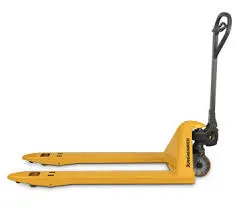


Types of Fall Protection Ensuring Safety in Elevated Workspaces
Fall protection is a critical aspect of occupational safety, especially in industries that require working at heights, such as construction, maintenance, and telecommunications. Falls from elevated surfaces can lead to severe injuries or even fatalities. Understanding the various types of fall protection systems is essential for employers and employees alike to foster a safe working environment. This article will explore the different types of fall protection methods available, emphasizing their importance and applications.
1. Personal Fall Arrest Systems (PFAS)
Personal Fall Arrest Systems are crucial for individuals working at heights. A PFAS generally consists of a full-body harness, lanyard, and anchor point. When properly used, this system stops a fall before the worker can hit the ground. Harnesses are designed to distribute fall forces across the body, minimizing injury in the event of a fall. Furthermore, it is imperative that the anchor points are robust and properly installed to ensure they can withstand the forces exerted during a fall.
Workers should also be trained in the proper fit and usage of these systems. Regular inspections of equipment are necessary to ensure that the gear remains in safe working condition.
2. Guardrails
Guardrails are a common form of passive fall protection that can help prevent falls without requiring the user to actively engage with the system. These are typically constructed around open sides and edges of elevated work platforms, roofs, and scaffolding. Guardrails are often composed of a top rail, mid-rail, and toe board, creating a barrier that can effectively stop a worker from falling off an edge.
One of the advantages of guardrails is that they do not require any special training to use, ensuring that all workers remain safe while moving around elevated surfaces. However, guardrails must be installed correctly and maintained to ensure their effectiveness over time.
3. Safety Nets
Safety nets are another effective fall protection method, particularly in construction settings. Installed below the working level, these nets catch falling individuals and debris, reducing the risk of injury. Nets must be placed with consideration for the potential fall distance and should be strong enough to withstand the dynamic forces of a fall.

Regular inspections and maintenance of safety nets are paramount. They should be checked for any signs of wear, damage, or degradation, which could compromise their effectiveness.
4. Fall Restraint Systems
Fall restraint systems are designed to prevent workers from reaching the edge of a fall hazard, thereby avoiding a fall altogether. These systems involve the use of body belts or harnesses connected to a lanyard or lifeline that limits the worker’s movement, ensuring they remain safely away from any potential fall hazards.
Fall restraint systems can be particularly effective in situations where guardrails are not feasible, and their use requires proper training and understanding of the limitations of the system.
5. Work Positioning Systems
Work positioning systems allow workers to be supported on an elevated surface, freeing their hands for work while ensuring they are safely positioned away from edges. Workers typically use a harness that is tied to a fixed anchor point, allowing them to lean back and work hands-free.
These systems are particularly useful in scenarios where workers need to perform tasks at a height, such as window washing or maintenance on tall structures. Training is essential to ensure workers can use these systems effectively.
Conclusion
Understanding the various types of fall protection is vital for safety in working at heights. Every workplace is different, and the choice of fall protection system should be tailored to the specific conditions and risks present. Employers must ensure that their workers are adequately trained in the use of these fall protection systems, and regular inspections must be conducted to maintain the safety of all equipment. A proactive approach to fall protection not only enhances worker safety but also promotes a culture of safety within the organization.



